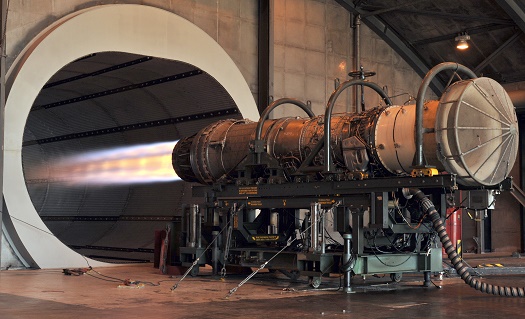Index
|
Physics
of Turbine Engines http://en.wikipedia.org/wiki/File:F100_F-15_engine.JPG The reason why turbine engines work
so well all comes down to Newton’s Third Law of Motion:
“Every force occurs as one member of an action/reaction
pair of forces.” (Knight 177). This means that the force
with which the exhaust air is pushed out of the engine
is equal to the forward force that the air has on the
engine, resulting in forward thrust. In order to get this thrust, the gas
turbine engine utilizes several other areas of physics
as well. The equation PV=nRT is vital to the engine
process beginning in the compressor, where volume is
decreased, leading to an increase in pressure. This
allows more mass of air to be pushed into the combustion
chamber, leading to a better ignition of the fuel. When
the high pressure air is then pushed into the turbine,
it is allowed to expand, which turns some of the
internal energy of the air into mechanical work for the
compressor. This is made possible by the conservation of
energy. Conservation of energy is also utilized to
increase the velocity of the air at the expense of
pressure in the engine’s nozzle. This high velocity air
provides the force needed to propel the engine forward. Next: Works Cited |